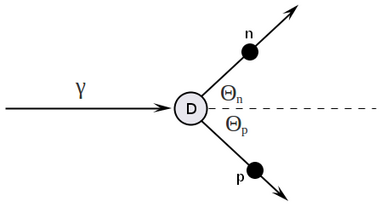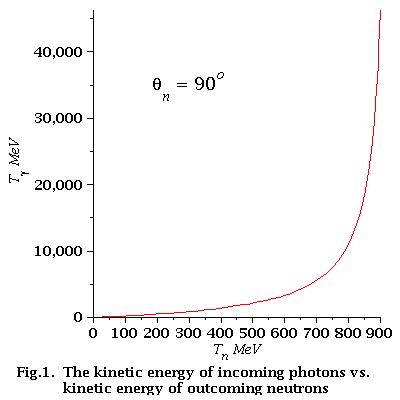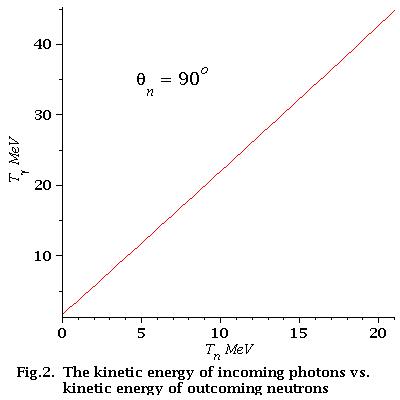Difference between revisions of "Neutron Polarimeter"
Jump to navigation
Jump to search
| Line 77: | Line 77: | ||
And: | And: | ||
| − | <math>\delta t = -\ \frac{m\ l^2}{\left(1-\frac{ | + | <math>\delta t = -\ \frac{m\ l^2}{\left(1-\left(\frac{l}{c\ t}\right)^2\right)^{3/2}c^2 t^3}</math> |
[[File:formula2.png]] | [[File:formula2.png]] | ||
Revision as of 15:37, 5 April 2011
Analysis of energy dependence
four-vectors algebra
writing four-vectors:
Doing four-vector algebra:
Detector is located at , so
and visa versa
how it looks
low energy approximation
As we can see from Fig.2 for low energy neutrons (0-21 MeV)
energy dependence of incident photons is linear
Find that dependence. We have:
So, the equation of the line is:
Finally for low energy neutrons (0-21 MeV):
example of error calculation
example 1
Say, we have, 10 MeV neutron with uncertainty 1 MeV, the corresponding uncertainly for photons energy is:
example 2
Say, the neutron's time of flight uncertainly is 1 ns
The neutron's kinetic energy is:
And:
Also we need the neutron's time of flight as function of neutron's kinetic energy:
Say, we have 10 MeV neutron, 1 m away detector, and neutron's time of flight uncertainty is 1 ns
Using formulas above:
neutron time of flight
absolute neutron kinetic energy error
relative neutron kinetic energy error
absolute photon energy error
relative photon energy error
Some other calculations for different detector distance and neutron kinetic energy are:
| 1 ns | 1 m | 5 MeV | 0.103 | 32 ns | 0.31 MeV | 6.2 % | 0.64 MeV | 5.3 % |
| 1 ns | 1 m | 10 MeV | 0.145 | 23 ns | 0.88 MeV | 8.8 % | 1.81 MeV | 8.1 % |
| 1 ns | 1 m | 20 MeV | 0.203 | 16 ns | 2.51 MeV | 12.6 % | 5.16 MeV | 12.1 % |
| 1 ns | 1 m | 0.5 MeV | 0.033 | 102 ns | 0.010 MeV | 1.9 % | ||
| 1 ns | 1 m | 1 MeV | 0.046 | 72 ns | 0.028 MeV | 2.8 % | ||
| 1 ns | 1 m | 2 MeV | 0.065 | 51 ns | 0.078 MeV | 3.9 % | ||
| 1 ns | 1 m | 4 MeV | 0.092 | 36 ns | 0.22 MeV | 5.5 % |



